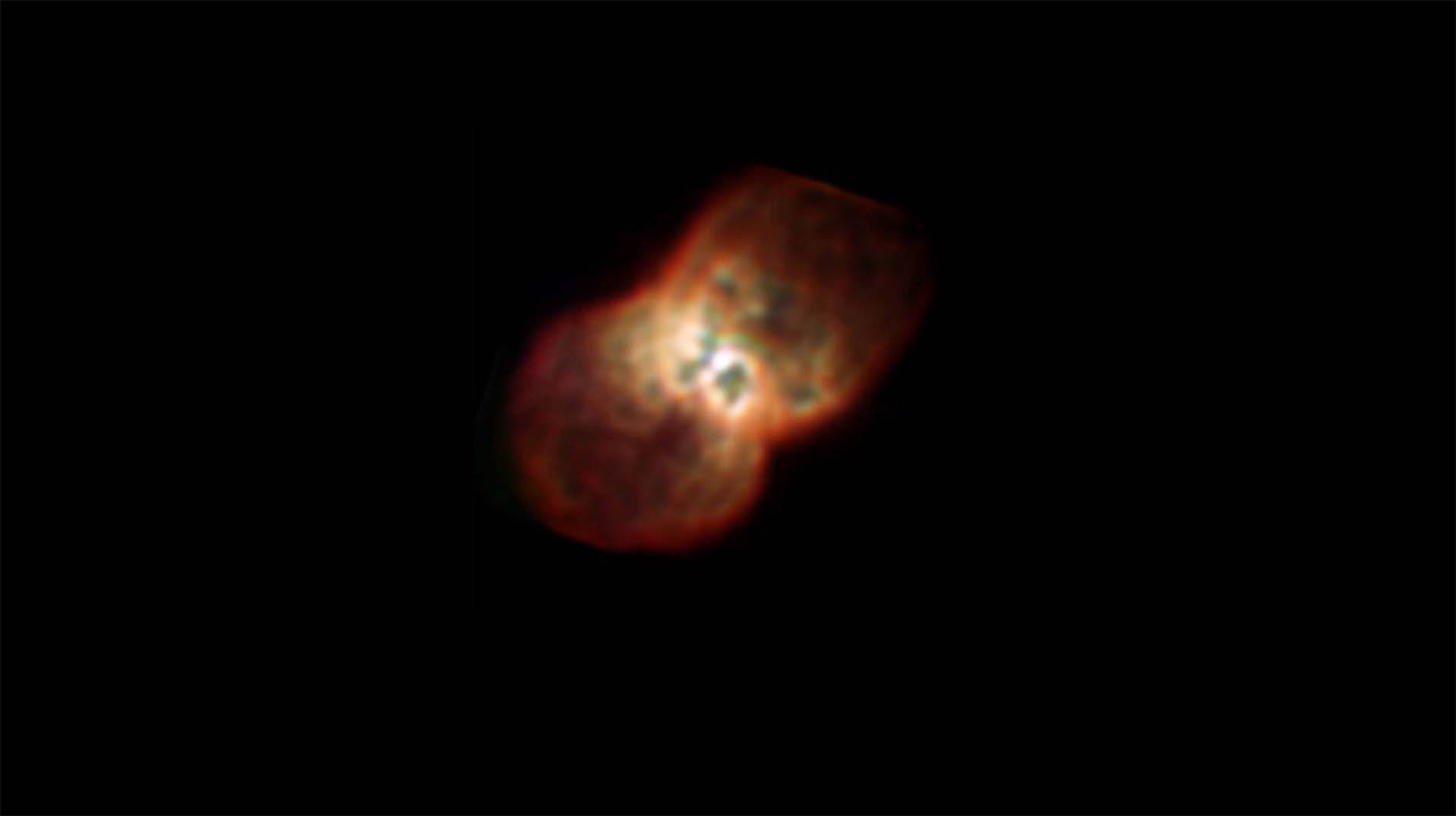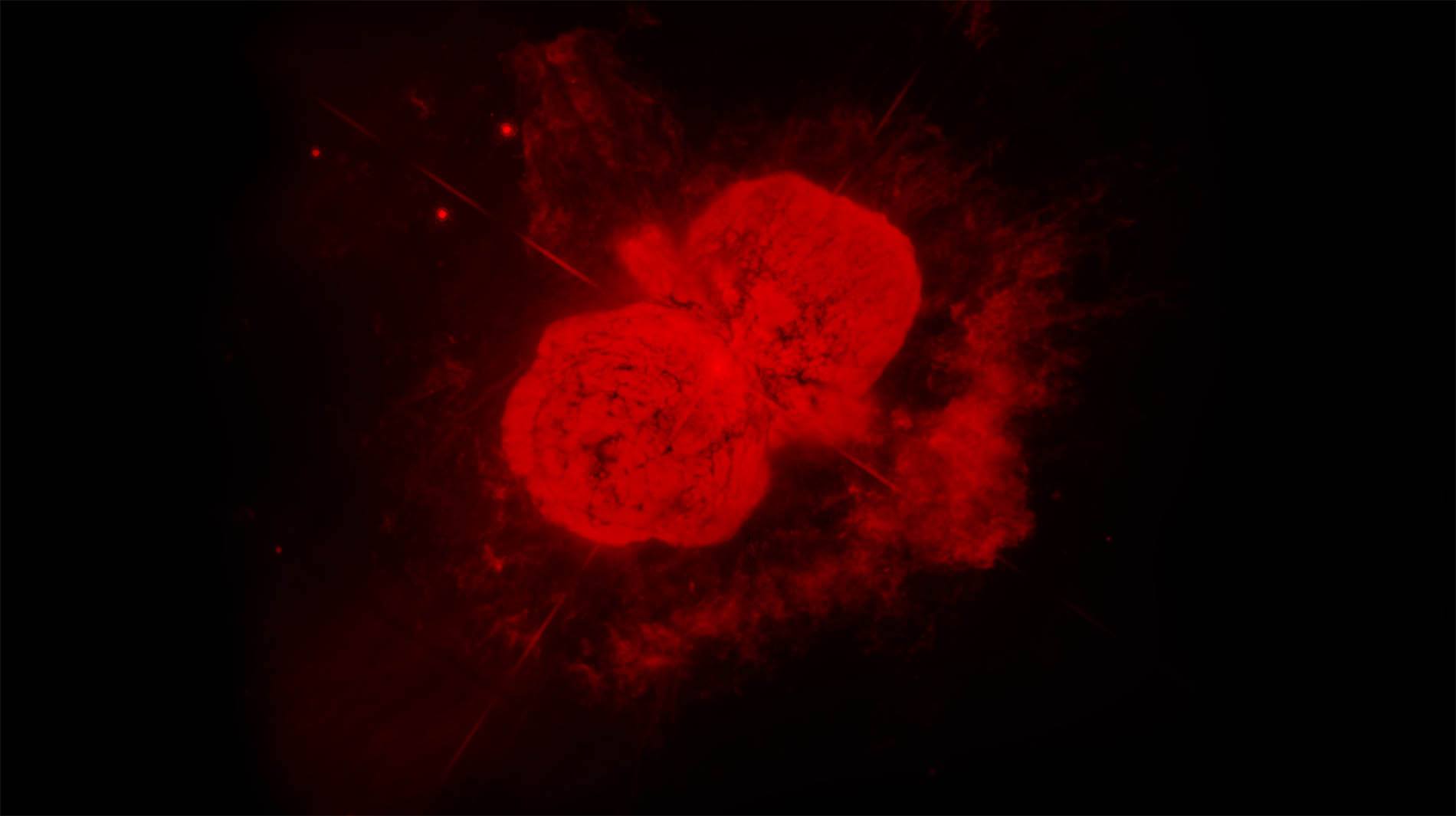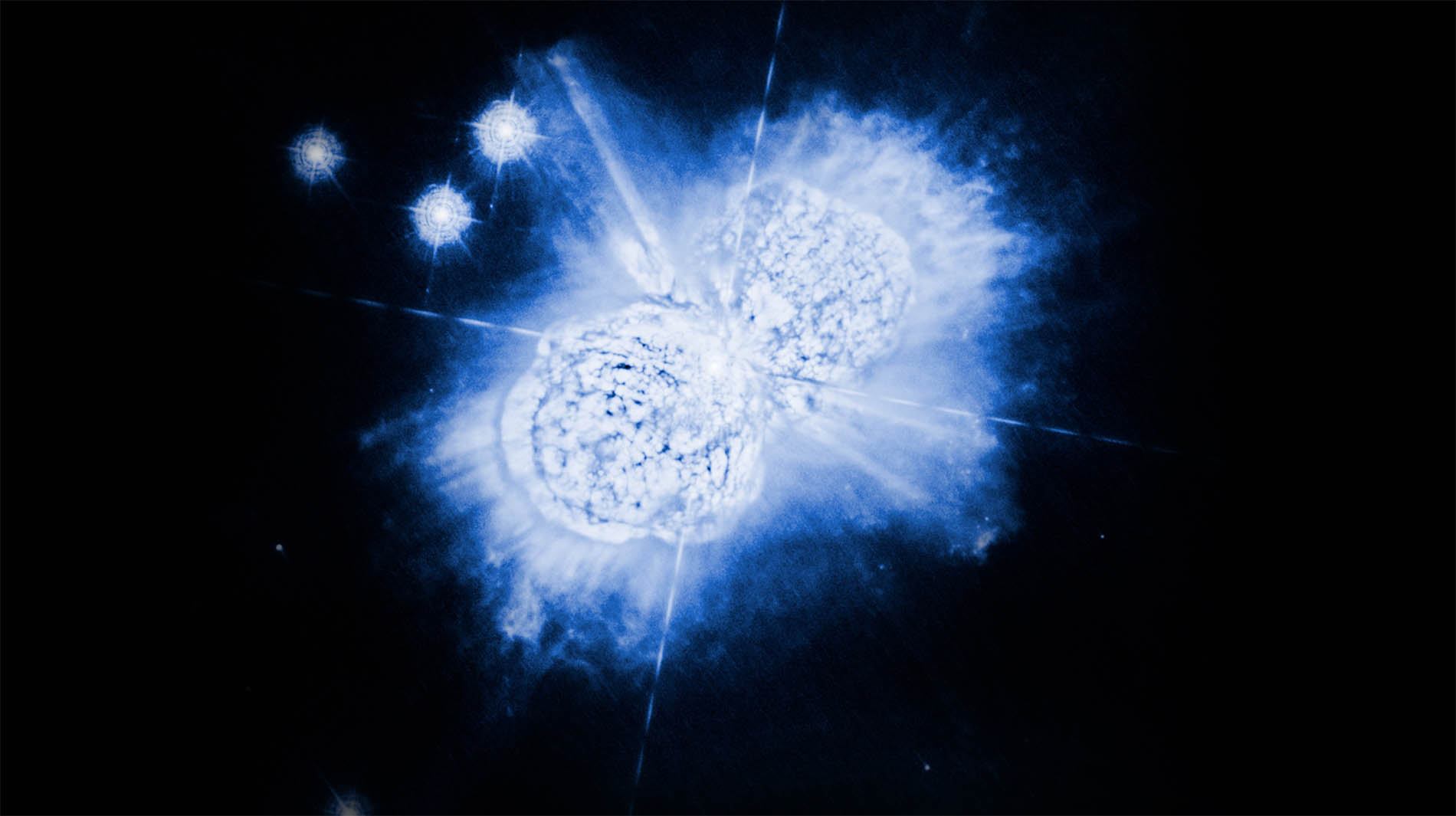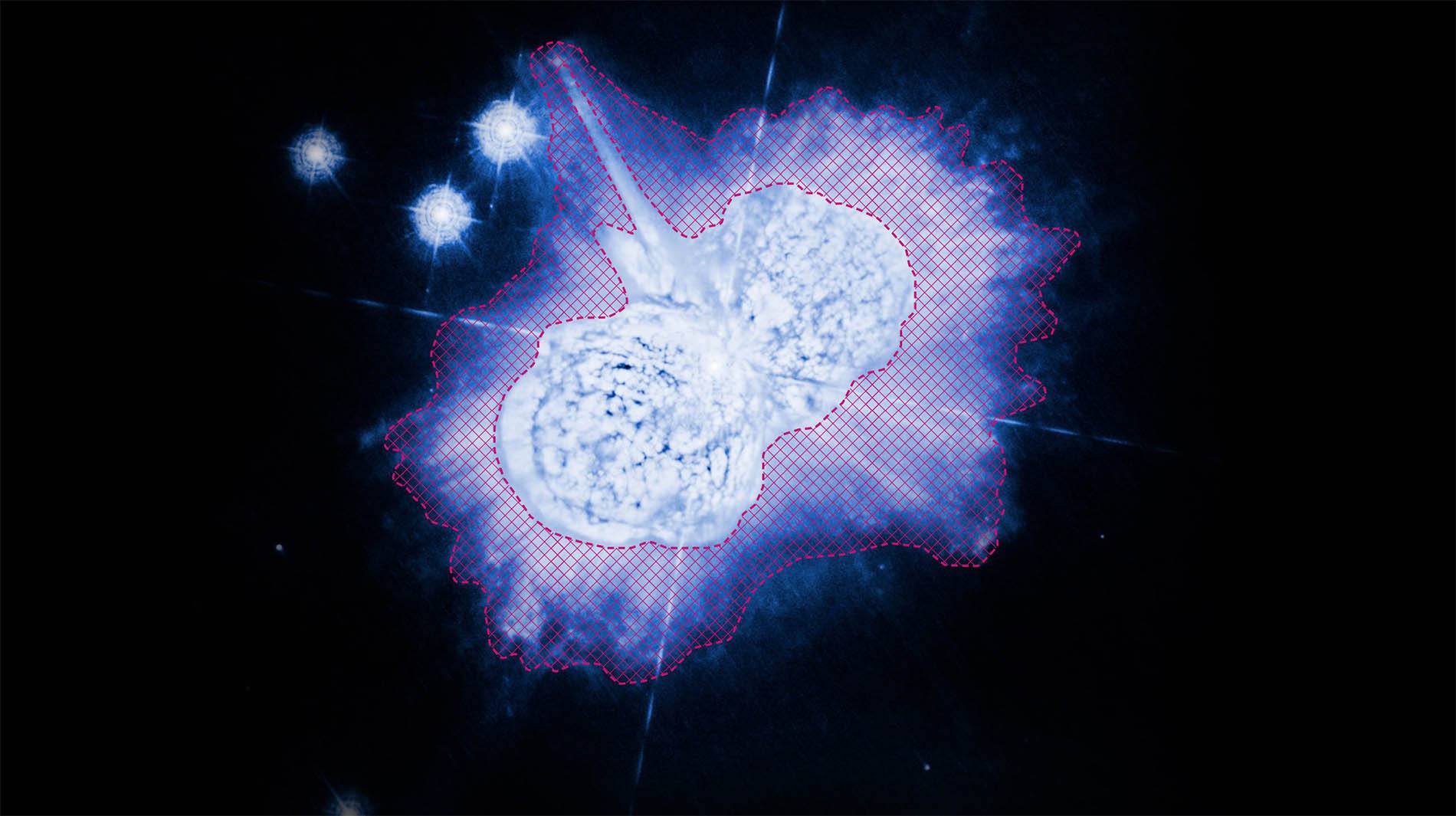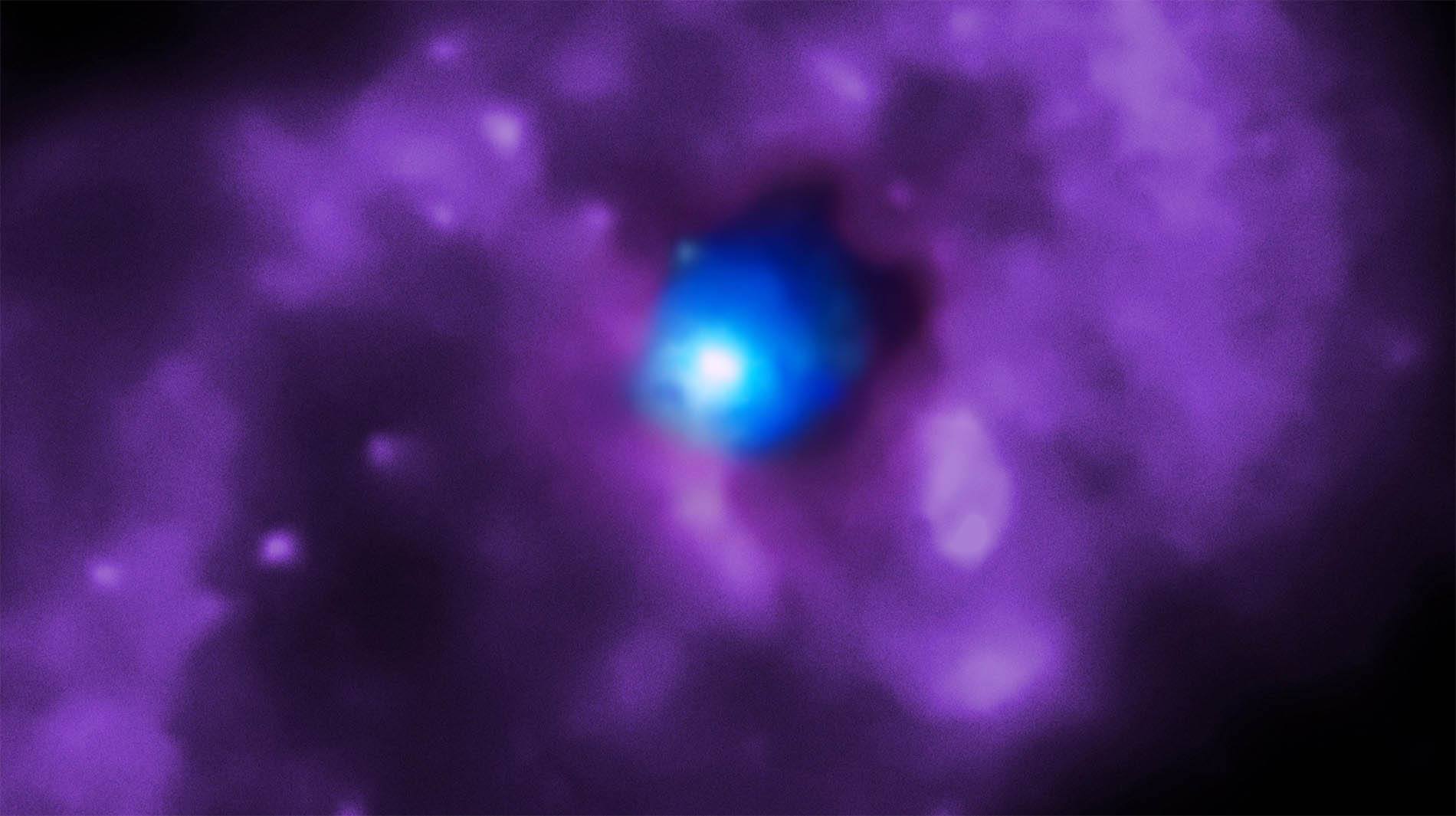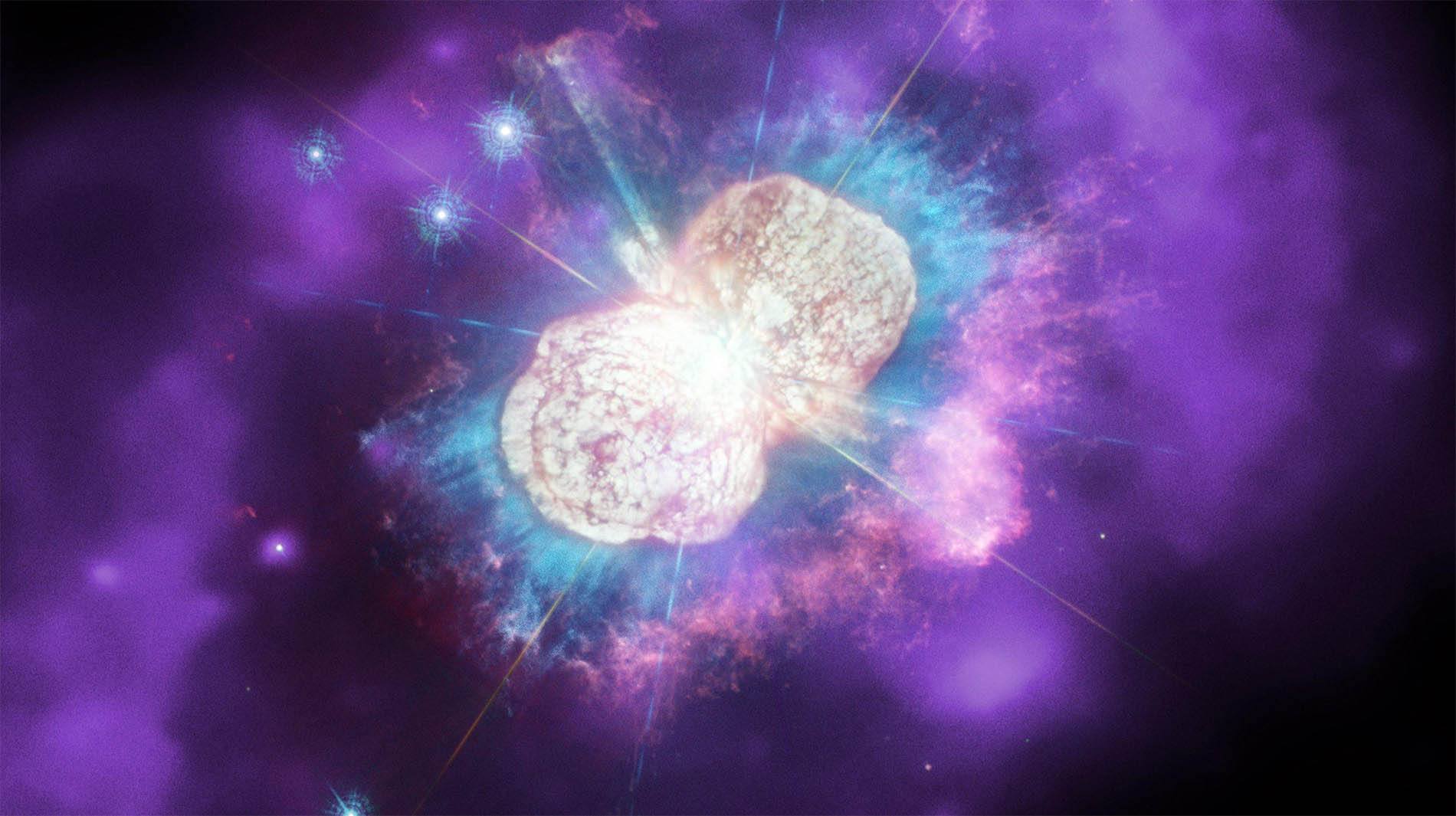Interactive Overview
Slider Interactive: A series of images showing the variable star Eta Carinae in different wavelengths of light. Below the caption is a horizontal slider bar with five labeled stops and a solid white circle. Dragging the white circle right and left along the slider bar causes the image, labels, and caption to change. The change occurs gradually as one image, along with its associated captions and labels, fades out and the next fades in. A toggle button to the upper right of the image turns the image labels off and on. Labels are in the form of text with arrows pointing to specific features in the image. Other labels are graphic overlays.
Slider Stops
From left to right, the slider stops are labeled: Infrared, Visible, Ultraviolet, X-ray, and Multi-wavelength.
Summary of Slider Stops
Sliding left to right reveals the following:
- “Infrared” stop shows a pair of bright binary stars and two fluffy orange-brown lobes of dust against the black background of space.
- “Visible” stop shows two fluffy red lobes along with surrounding gas and nearby points of light.
- “Ultraviolet” stop shows two fluffy blue-white lobes along with surrounding wisps and points of light.
- “X-ray” stop shows a bright blue blob surrounded by hazy patches of purple.
- “Multi-wavelength” stop shows a colorful composite of the images in the previous four stops. This is the initial image shown when the interactive is loaded.
Stop 1: Infrared
Image Description: Infrared
An image of the infrared light emitted from Eta Carinae shows a brownish orange to white object shaped like a peanut shell or hourglass, oriented 45 degrees clockwise from vertical. One lobe is pointing toward the viewer, and one is pointing away. The two bulbous lobes—one toward the upper right and the other toward the lower left—have a mottled surface that grades from orange to brown. The narrow region at the center is relatively bright, with a bright white spot in the middle. The brightness decreases with distance. The boundary between the object and the black background of space is relatively fuzzy.
Labels: Infrared
There are two text labels. The orange-brown bulbous lobes are labeled “Hourglass shape of glowing dust.” The bright spot at the center is labeled “Binary stars.”
Caption: Infrared
Warm, glowing dust that was ejected during the 1840s is now heated by radiation from the central stars.
Stop 2: Visible
Image Description: Visible
This image reveals the same view of Eta Carinae, now seen in visible light. The image is higher resolution than the “Infrared” stop, revealing more details. The two lobes are closely grouped together and comprised of fluffy red material covered in darker filaments. Four thin, faint red lines, which are diffraction spikes, diagonally cut across the center. Surrounding the two lobes further away are wisps of red material that resemble smoke. A few small red points, mostly in the top left, are scattered.
Labels: Visible
There are three text labels. A small red dot toward the upper left is labeled “Neighboring star.” The upper right red bulbous lobe is labeled “Starlight scattered by dust.” The wisps of red material on the outskirts of the object are labeled “Gas heated by shock waves.”
Caption: Visible
Mirrored lobes of gas and dust surround Eta Carinae’s central stars, which are flanked at right by ragged, shock-heated gas.
Stop 3: Ultraviolet
Image Description: Ultraviolet
This image reveals the same view of Eta Carinae, now seen in ultraviolet light. The two lobes are closely grouped together and comprised of fluffy blue-white material covered in darker filaments. Four thin, faint blue-white lines, which are diffraction spikes, diagonally cut across the image’s center. Closely surrounding the two lobes are smoke-like wisps of blue-white material, which are brighter closer to the lobes and gradually dim in color moving further away. The blue-white material forms a pattern of streaks and clumps radiating out from the lobes, and there are two distinct large spikes that appear to emanate from the point where the two lobes join: one toward the top left and the other toward the bottom right. A few blue-white circular objects with diffraction spikes, mostly in the top left, are scattered.
Labels: Ultraviolet
There are two text labels and one graphic overlay. The blue-white material that surrounds the two lobes is overlaid with a red checkered transparent background, which is labeled “Evidence of fast-moving neutral hydrogen.” Toward the top left, the tallest spike-like section of the surrounding blue-white material is labeled “Light passing through dust.”
Caption: Ultraviolet
When clumpy dust is struck by ultraviolet light from the hidden stars, it can send out rays of light or cast long, thin shadows.
Stop 4: X-ray
Image Description: X-ray
This image reveals the same view of Eta Carinae, now seen in X-ray light. A bright blue-white center is surrounded by blue fuzzy halos, which become darker moving away from the center. The blue center is surrounded by hazy blotches of purple, some areas opaquer than others. Areas of the fuzzy black space background are seen in the top left, bottom left, and bottom right. A few small hazy purple circles are scattered throughout the image.
Labels: X-ray
There are two text labels. The circular blue center is labeled “Colliding winds of binary stars.” A portion of the purple hazy area below that is labeled “Ejected material heated by shocks.”
Caption: X-ray
X-rays at the center highlight the stars’ colliding winds, while beyond that expelled material crashes into earlier ejections.
Stop 5: Multi-wavelength
Image Description: Multi-wavelength
This image is a composite of the wavelengths explored in the prior stops. Against a black swath of space, two light pink-white lobes connected by a bright white narrow center form the shape of an hourglass. The lobes are comprised of fluffy pink-white material closely grouped together. Closely surrounding the lobes is a layer of rays of blue wispy material and then pink wispy material further away. Thin faint diffraction spikes in various colors are emitted from the object’s bright center: blue, white, and pink. Further away, hazy blotches of purple surround the two lobes. A few blue-white circular objects with diffraction spikes, mostly in the top left, and fuzzy purple dots near the bottom left are scattered.
Labels: Multi-wavelength
There are three text labels. The area in the center is labeled “Central binary stars.” The two lobes on either side are both labeled “Dusty outburst.”
Caption: Multi-wavelength
Two massive stars, locked in a tight orbit, continue to shape gas and dust that were ejected over a hundred years ago.
